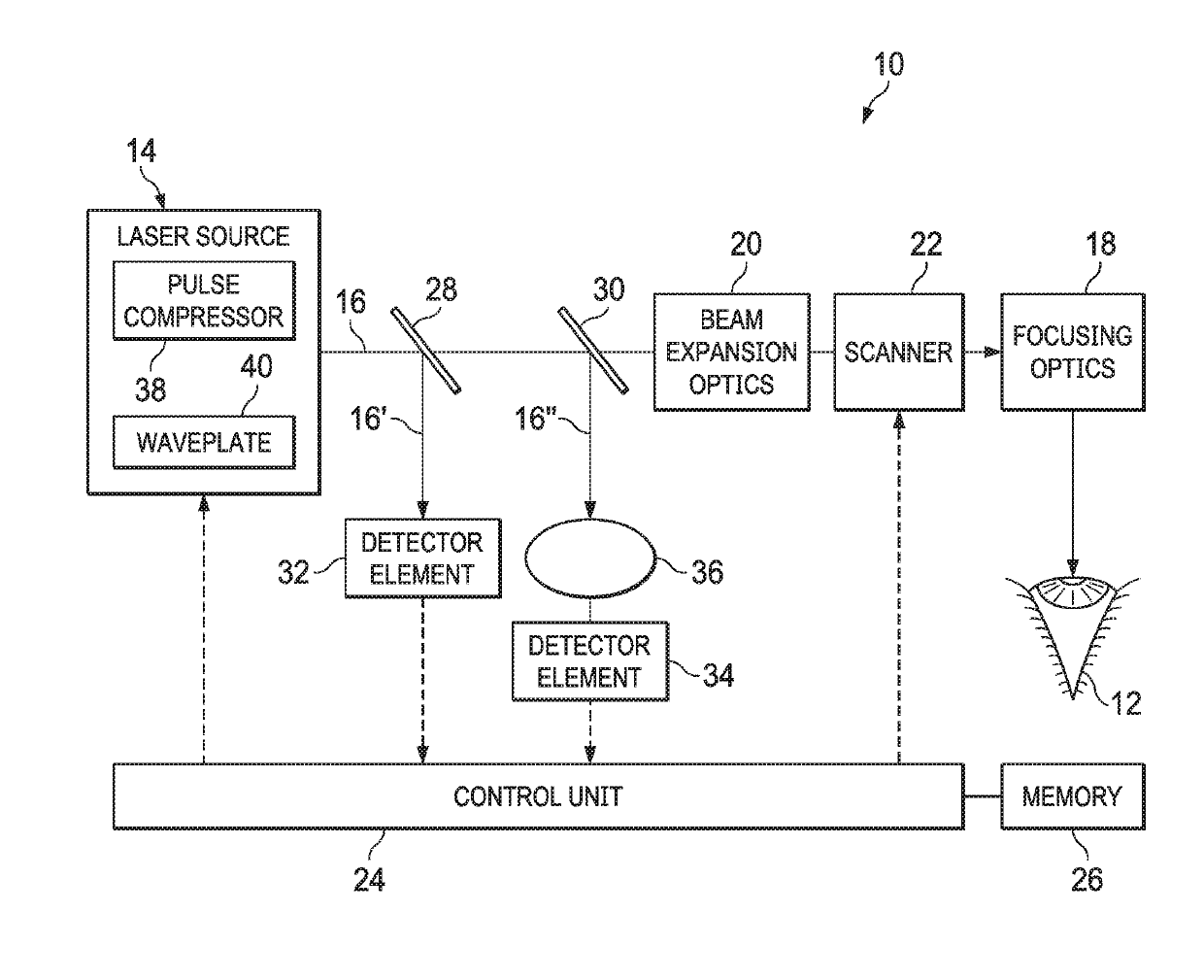Laser device for material processing
a laser beam and material technology, applied in the field of laser beam monitoring devices, can solve problems such as high degree of complexity of systems, and achieve the effect of facilitating inline monitoring of laser beams
- Summary
- Abstract
- Description
- Claims
- Application Information
AI Technical Summary
Benefits of technology
Problems solved by technology
Method used
Image
Examples
Embodiment Construction
[0016]Preferred embodiments are explained in greater detail below with reference to FIG. 1. This shows a device, generally designated by 10, for laser-aided material processing. In the example shown, the laser device 10 is used for laser processing of a human eye 12 and for producing intracorneal tissue sections there, for example. In principle, however, the present disclosure is not limited to the use of the laser device 10 in laser-aided eye surgery. Instead of this, the laser device 10 can also be used in particular for cutting laser processing of other biological tissue as well as of non-biological material.
[0017]The laser device 10 comprises a laser source 14, which produces a pulsed laser beam 16 with pulse durations in the pico-, femto- or attosecond range. The laser device 10 also comprises focusing optics 18, which are formed by an F-Theta lens, for example. The focusing optics 18 focus the laser beam 16 onto the object to be processed, here the eye 12. Also arranged in the...
PUM
| Property | Measurement | Unit |
|---|---|---|
| energy density | aaaaa | aaaaa |
| transparent | aaaaa | aaaaa |
| energy density | aaaaa | aaaaa |
Abstract
Description
Claims
Application Information
 Login to View More
Login to View More - R&D
- Intellectual Property
- Life Sciences
- Materials
- Tech Scout
- Unparalleled Data Quality
- Higher Quality Content
- 60% Fewer Hallucinations
Browse by: Latest US Patents, China's latest patents, Technical Efficacy Thesaurus, Application Domain, Technology Topic, Popular Technical Reports.
© 2025 PatSnap. All rights reserved.Legal|Privacy policy|Modern Slavery Act Transparency Statement|Sitemap|About US| Contact US: help@patsnap.com

